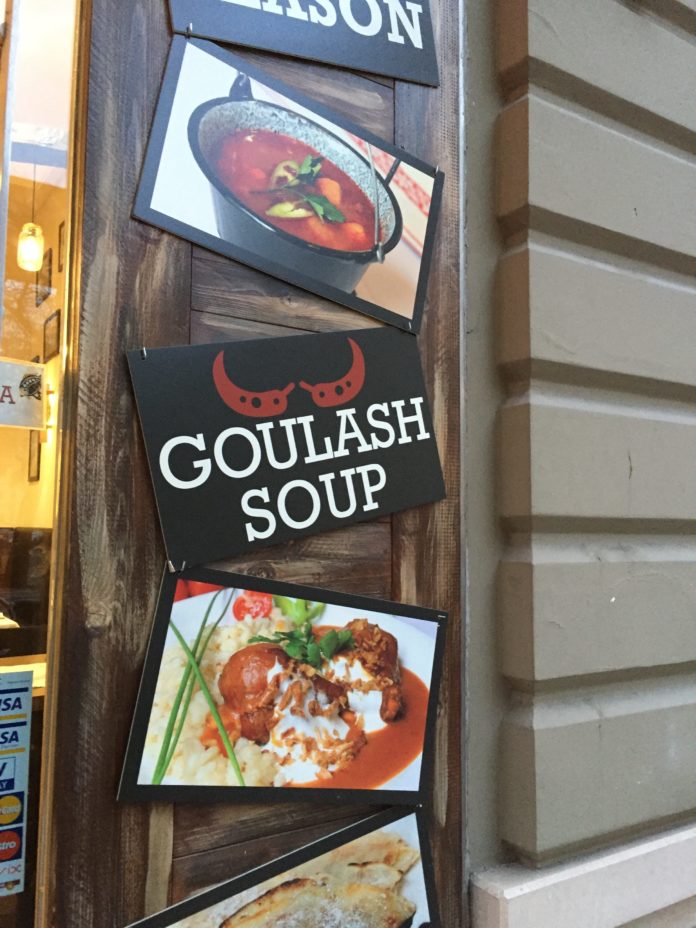Die gute ungarische Gulaschsuppe wurde zum Hungarikum erklärt. Wenn man die Wörter Gulasch oder Budapest hört wierden diese sofort mit Ungarn in Verbindung gebracht. Wir kennen ebenso Hungarikums wie Pálinka, Herend Porzellan oder die Fischsuppe in Baja oder Tisza.
Ab Dienstag sind weitere Hungarikum auf die Liste gesetzt worden. Dazu gehört die original ungarische Gulaschsuppe. Die ungarische Gulaschsuppe hat mittlerweile weltweit eine Bedeutung. Da schmeckt die Suppe nun bestimmt noch besser, als echtes Hungarikum.
Auch das Porzellan von Hollóháza welches 240 Jahre Pozellan-Tradition hat, wurde auf die Hungarikum Liste gesetzt.
Als Hungarikum bezeichnet, werden Dinge die den ungarischen Charakter, Tradition, Einzigartigkeit und die Marke sowie die Qualität Ungarns beinhalten.
Goulash soup became Hungarikum
If we heard the word Gulyás or Budapest, we associate Hungary and the people who live there. We also know Hungarikum as Pálinka, Porcelán from Herend, or we can mention Fish soup made in Baja, or Tisza.
But from Tuesday, there are more Hungarikum on the list.
Because according to the decision of the Hungaricum Committee, the original Hungarian goulash soup, the order of „Pál“ and porcelain from Hollóháza have been included in the collection of Hungaricum.
They justified their decision that goulash has worldwide famous. And as a Hungarian food, it has a significant influence on the hospitality and the tourism.
The order of Pál is an 800 years old pattern and plays a decisive role in the history and culture of the Hungarian nation. And last but not least the 240-year-old Porcelán from Hollóház be there because of its diverse, unique design and decorations.
But what is Hungarikum exactly?
Well, according to the recording, Hungaricum representing a remarkable value which, with the characteristic, uniqueness, distinctiveness and quality of Hungarians, is the peak performance of Hungarians.
Ungarisch:
Hungarikum lett a gulyás leves
Ha meghalljuk azt a szót, hogy gulyás, vagy akár Budapest, mindenki Magyarországra asszociál, és az emberekre akik ott élnek. Persze, akadnak más Hungarikumok is, mint például a pálinka, a Herendi porcelán vagy például megemlíthetjük a bajai és a tiszai halászlevet is.
De kedd óta, több Hungarikum is felkerült a listára.
Ugyanis a Hungarikum Bizottság keddi sajtótájékoztatóját követően, a gulyás leves, a pálos rend és a hollóházi porcelán is a hungarikumok gyűjteményébe került.
A gulyásleves azzal érdemelte ki helyét a rangos listán, hogy világhírű valamint jelentős szerepe van a vendéglátásban, és a turizmusban egyaránt. Míg a Pálos rend annak köszönheti Hungarikum titulusát, hogy több mit nyolc évszázada tartó szerepet tölt be a nemzet történelmében és kulturájában. A hollóházi porcelán pedig 240 éves múltja alatt bebizonyította, hogy sokszínű, egyedi forma- és dekorvilága miatt helye van a Hungarikumok közt.
De mit is jelent pontosan a Hungarikum kifejezés?
A feljegyzések szerint a Hungarikum figyelemre méltó érték, olyan megkülönböztetésre, kiemelésre méltó értéket jelöl, amely a magyarságra jellemző tulajdonságával, egyediségével, különlegességével és minőségével a magyarság csúcsteljesítménye.















